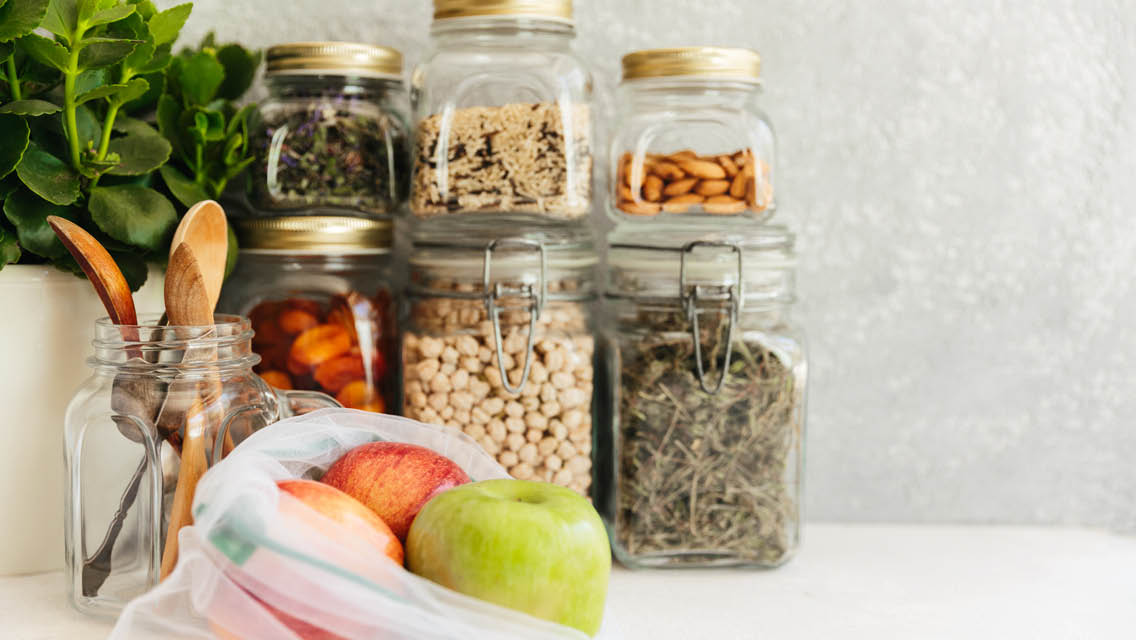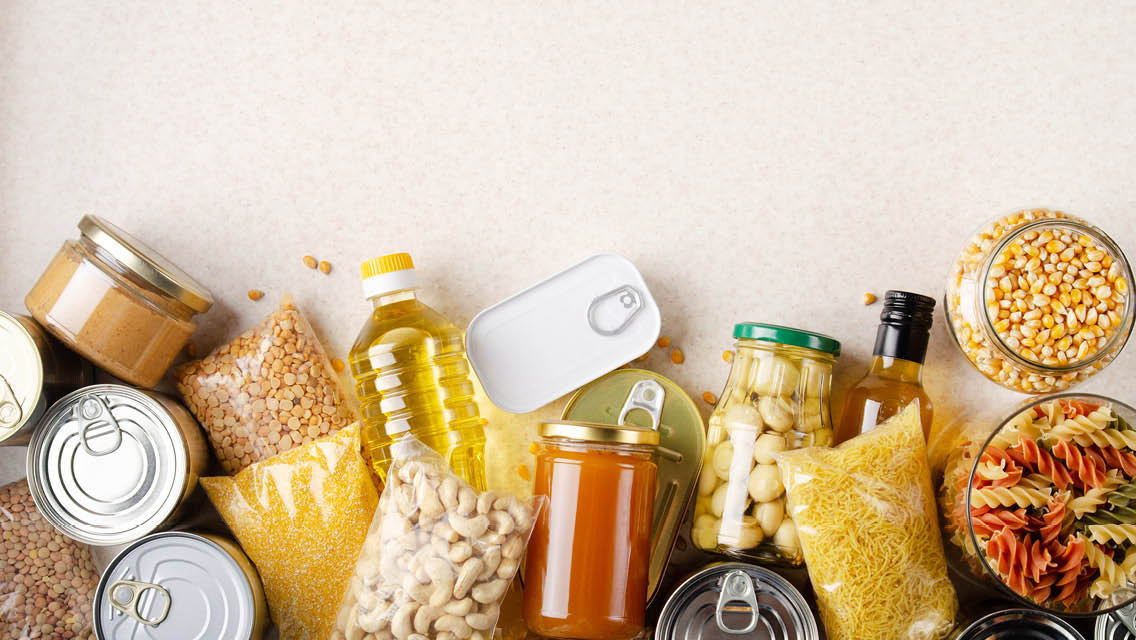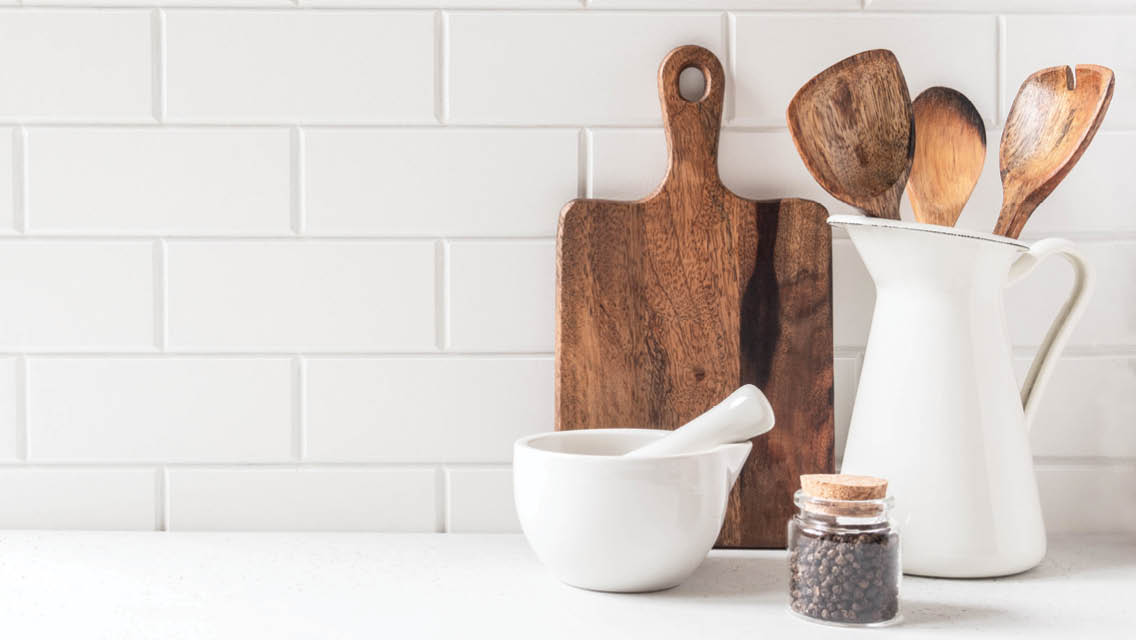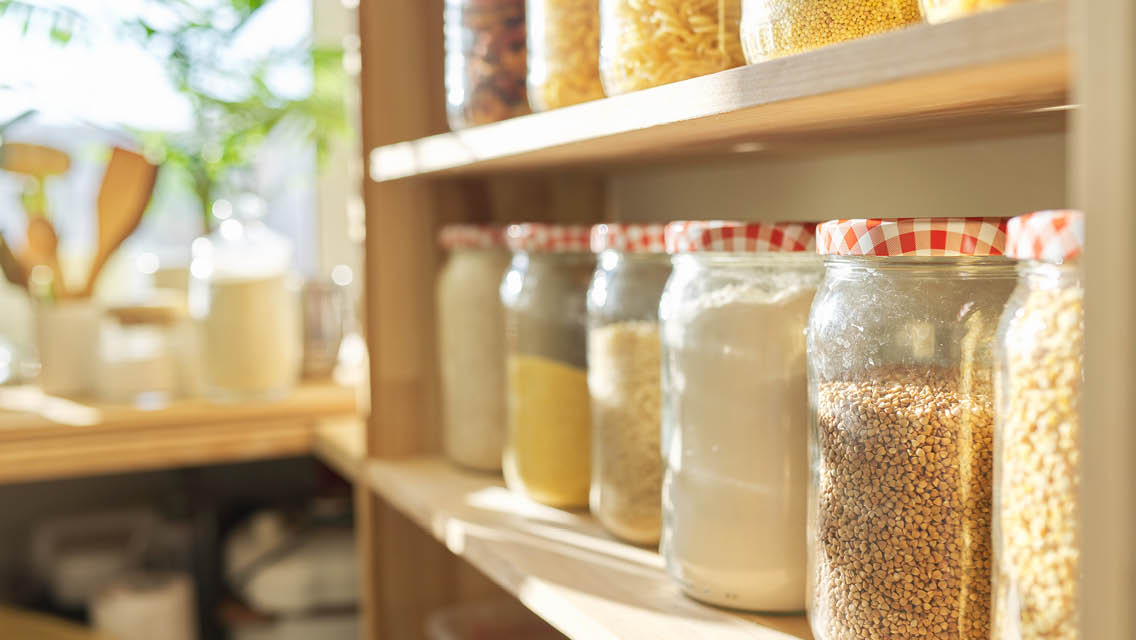If you’re a parent, you’ve probably heard the complaint that there’s “nothing to eat” — only to open the pantry yourself and find that it’s actually plenty full. Perhaps the real problem here is that the delicious and nutritious foods your family loves are hidden in the chaos of a disorganized storage space.
You may be holding on to expired foodstuffs, duplicate items, or even gifted products that you’ll never use. If your dry-goods storage is overflowing and you can’t find the cornstarch when you really need it, you are missing out on the joys of a well-ordered space.
The pantry is like a command center, and a thoughtfully designed one can turn your kitchen into a functional space that serves the whole family. “A well-organized pantry makes life easier and saves time and money,” says Danielle Walker, best-selling author of Healthy in a Hurry. “I can quickly grab what I need for my meals, which gives me more time to cook and enjoy my family with less stress. Plus, I’m not wasting food, and I can see what’s running low, so I know when to restock.”
Ideally, your organized pantry will give you a clear view of what you have — including the foods you keep on hand, the ingredients you use most often, and the snacks that you grab to go. This allows you to easily remove and replace items, all while serving the unique needs of your family.
Though it may seem daunting to go from chaos to order, the pantry is actually one of the most straightforward areas of your home to declutter and reorganize.
“I love organizing pantries and kitchens, because it’s the easiest space to purge,” says Naeemah Ford Goldson, an organizing and design expert in Atlanta. “You can start small, organizing for no more than 30 minutes, and make a lot of progress.”
Try these tips to make your pantry work for you.
1) Declutter First
Start by getting rid of the products you don’t need. Pull out all the items in your pantry and toss those whose expiration dates have passed. Anything that hasn’t expired can be donated to a food pantry in your area. Bonus: Doing good for someone else can turn the chore into a positive moment in your day.
If this feels overwhelming, you can declutter shelf by shelf or one category at a time. Perhaps one day you pull out all the canned goods to decide what to keep and what to donate. Next, sort through pastas and grains. Then, organize your bottles and condiments. The more you streamline the items that you keep on hand, the easier it is to find everything.
2) Consider Your Needs
The next step is to assess the best storage system for the foods your family uses most regularly. Evaluate your space to decide what will fit where, with an eye to ease of access.
A common obstacle at this stage is not quite knowing what to do with the space you have, Walker notes, adding that plenty of people don’t have a true pantry at home. “It might be a cupboard that’s meant for dishes, but you’re using it for food, or maybe it’s a random little coat closet that you’ve transitioned into a pantry.”
Create zones for different categories, such as baking supplies, canned products, spices, oils and vinegars, and grains.
If your pantry is small, make use of vertical space and stackable containers. If the space features plenty of shelving, put like items together and use adjustable shelves to store the items you usually stock. A few roll-out shelves might add versatility, and a door rack can create extra space.
If someone in your family has an allergy or special dietary needs, that will influence your organizational structure too. Put items for young children lower down, where they can easily grab them — and keep any allergens or special-occasion items out of reach on higher shelves.
3) Make It Yours
Now’s the time to consider how to make the space your own. If you’re a visual person, you might benefit from clear containers for grains, beans, and other dry items. Or perhaps decorative baskets with labels are more your style.
“It can actually be kind of fun, when you feel overwhelmed about it, to look at it as like a little Tetris puzzle,” Walker says. “Get a couple of tools that help make it a little more organized.”
Do you want to get risers to elevate cans and boxes in the back of your pantry so they’re easier to see? Or perhaps you would be better off with a bin that you can pull out and slide back in when you’ve retrieved what you need.
You don’t need to buy lots of new storage products, but you might invest in an item or two that would make a difference for your space. Consider, too, that you may be able to repurpose household items to help corral certain foodstuffs: Laundry baskets, shoe boxes, and old office storage containers can all be useful organizational tools.
Use color if that’s your thing, or monochrome if you prefer. “Whatever you do, whatever theme you decide on, stick with that,” Ford Goldson says, “so there’s not a hodgepodge of different types of organizing products in the pantry.”
Walker stores snacks in a rotating tray with clear drawers so her children can spin around to the foods they want. “It’s like the wheel of snacks,” she says.
Keep baskets of fruit and wholesome snacks front and center in the pantry to encourage healthy eating.
4) Keep it Up
Once you’ve decided on an organizational strategy, create routines to maintain your streamlined pantry. Make sure everyone knows where things go and what to do when items run low — whether that’s adding to a shopping list on the fridge or using a shared grocery app.
Dedicate time to keeping your system maintained. Perhaps every Sunday night is your pantry reset, when you bring home groceries and restock your containers. Dump the existing, older beans or grains into a bowl, decant the new supplies into the bottom of the container, where they’ll be consumed last, and add the older beans and grains to the top.
Similarly, put the newest cans and boxes in the back of your pantry and bring old ones to the front so they can be eaten before they expire.
“Get in the habit of doing it,” says Ford Goldson. “It takes a little bit more time. But once all the groceries are put away, you’re good.”
If you use bins, be sure to adjust labels as you add new items or change their contents. Ford Goldson likes bin clip labels, which are easy to replace as needed. Including expiration dates on the label can help you quickly see which products need to get used up.
Walker’s pantry system also helps her plan out family meals. “Pantry organizing goes hand in hand with meal planning,” she explains. “Having some canned and jarred items available is a nice fallback.” Consider stocking an array of favorite ingredients that you can easily whip up into a meal — a concept Walker calls “back-pocket dinners.”
Another tip: Snap a few photos of your pantry before you go to the grocery store. Then you can easily refer to the photo to check your supply and avoid buying duplicates.
As you live with your newly organized pantry, you may adjust and customize further based on your needs. Just stick to some core principles: good visibility, ease of access, and a system that naturally prompts you to eat older items first and stock newer food where it can be used last.
Above all, remember the organizing mantra: a place for everything, and everything in its place. You may be surprised by how much it changes your life.
“Organizing your pantry can make your life simpler,” Walker says, “and help you maintain your healthy eating habits without the frustration and waste.”
Balance
Explore more empowering strategies to support your efforts to live in (closer) alignment with your values at our Balance department.
This article originally appeared as “Optimize Your Pantry” in the May/June 2024 issue of Experience Life.





This Post Has 0 Comments